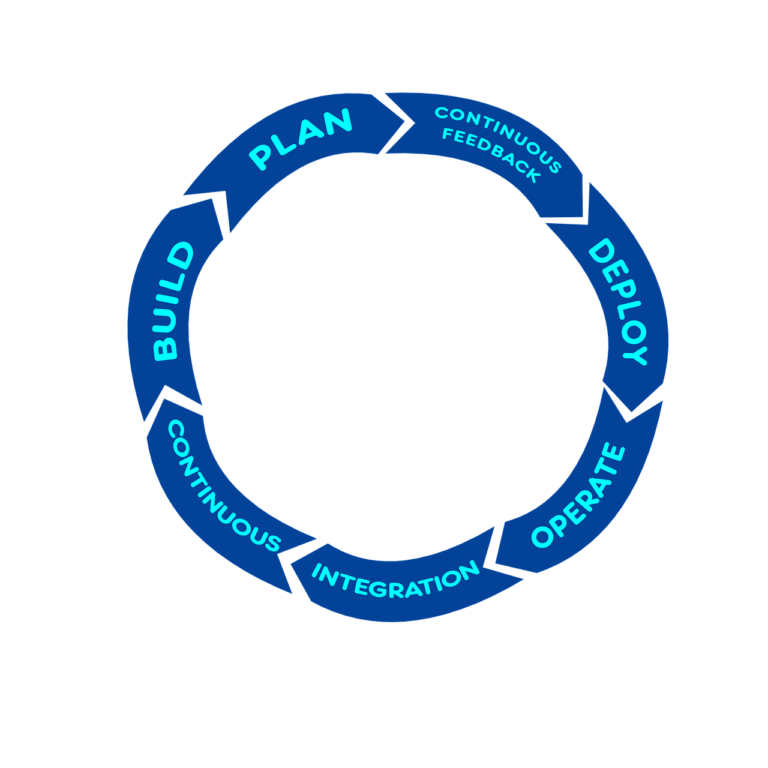What Are The Best Practices For Creating And Optimizing Facebook Ads?
Are you looking to create and optimize Facebook ads that grab the attention of your target audience? Look no further, as we’ll be sharing the best practices to achieve just that. In this article, we will explore tried and tested techniques to create compelling Facebook ads while optimizing their performance. Whether you’re a seasoned marketer or just starting out, these tips will empower you to make the most of Facebook’s advertising platform and drive meaningful results for your business. So, let’s dive right in!
Choosing the Right Ad Objective
Understanding the Different Objectives
When creating Facebook ads, it’s important to understand the different objectives available to you. Each objective serves a specific purpose and can help you achieve different goals. Some common objectives include increasing brand awareness, driving website traffic, generating leads, and boosting sales.
For example, if your goal is to increase brand awareness, you might choose the “Reach” objective, which focuses on delivering your ad to as many people as possible. On the other hand, if you want to generate leads, you might select the “Lead Generation” objective, which includes a form for users to submit their contact information directly in the ad.
Setting Clear Goals
Before diving into creating Facebook ads, it’s crucial to set clear goals. What do you want to achieve with your ads? Is it to increase sales by a certain percentage? Or maybe it’s to drive a certain number of website visits?
Setting goals helps you stay focused and provides a benchmark for measuring your ad’s performance. It’s essential to establish specific, measurable, attainable, relevant, and time-based (SMART) goals. This way, you’ll be able to track your progress and adjust your strategies as needed.
Aligning Objectives with Business Objectives
Your Facebook ad objectives should align with your overall business objectives. For example, if one of your top business objectives is to increase online sales, it makes sense to choose the “Conversions” objective on Facebook, which optimizes your ads to drive conversions on your website.
By aligning your Facebook ad objectives with your business objectives, you ensure that your advertising efforts are contributing directly to your company’s success. This alignment also allows you to allocate your resources effectively and maximize your return on investment (ROI).

Defining Your Target Audience
Identifying Target Demographics
To create effective Facebook ads, you need to have a clear understanding of your target audience. Start by identifying the demographics of your ideal customers, such as age, gender, location, interests, and behavior. This information will help you tailor your ads to better resonate with your audience and increase the chances of engagement and conversions.
For example, if you’re promoting a skincare product targeted towards women aged 25-35, you can set your ad’s demographics to reach this specific group. By targeting the right demographics, you’ll be able to reach the people who are most likely to be interested in your product or service.
Utilizing Facebook Audience Insights
Facebook Audience Insights is a powerful tool that provides valuable information about your target audience. It allows you to gather insights such as demographic data, interests, hobbies, and even purchasing behavior. By using this tool, you can uncover new targeting opportunities and refine your audience targeting to maximize the effectiveness of your ads.
For instance, if you’re targeting fitness enthusiasts, you can use Audience Insights to discover additional interests and behaviors related to fitness, such as specific gym memberships or fitness influencers they follow on social media. This information can help you create more targeted and relevant ads.
Creating Custom Audiences
Custom audiences are a great way to reach people who already have some level of engagement with your brand or website. You can create custom audiences by uploading customer lists, website visitor data, or engagement with your Facebook page or app.
By creating custom audiences, you can tailor your ads specifically to people who have already expressed interest in your business. For example, you can create a custom audience of people who have abandoned their shopping carts on your website and show them ads reminding them to complete their purchase.
Crafting Compelling Ad Copy and Design
Writing Engaging Headlines
The headline of your Facebook ad is one of the first things users will see, so it’s important to make it attention-grabbing and compelling. A good headline should be concise, clear, and arouse curiosity or emotion in the reader.
Consider using strong, actionable words and incorporating a benefit or solution to the reader’s pain point. For example, instead of a plain headline like “Buy our Product,” you could use something more persuasive like “Transform Your Skin with Our Revolutionary Skincare Product.”
Creating Persuasive Ad Copy
The body copy of your Facebook ad should expand on the headline and provide additional information in a concise and persuasive way. It’s important to highlight the unique selling points of your product or service and explain how it can benefit the reader.
Keep your ad copy focused and easy to read. Use bullet points or numbered lists to break up the text and make it more scannable. Including testimonials or social proof can also help build trust and credibility.
Choosing Eye-Catching Visuals
The visual component of your Facebook ads is crucial in capturing attention and conveying your message effectively. Select images or videos that are visually appealing, relevant to your offer, and align with your brand’s aesthetics.
Avoid overcrowding your ad with too much text or clutter. Facebook has guidelines on the amount of text that can be included in an ad image, so it’s important to strike a balance between visual impact and staying within the guidelines.
Optimizing for Mobile Users
Designing Mobile-Friendly Ads
With the majority of Facebook users accessing the platform via mobile devices, it’s essential to optimize your ads for mobile users. This means designing ads that are visually appealing and easy to navigate on smaller screens.
Ensure that your ad’s text and visuals are legible and the overall layout is responsive and adapts well to different screen sizes. Pay attention to the placement of interactive elements, such as buttons or forms, to ensure they are easily clickable on mobile.
Using Proper Image and Video Formats
To ensure your ads are displayed correctly on mobile devices, it’s important to use the proper image and video formats recommended by Facebook. For images, JPEG or PNG formats are commonly used, while videos should be in MP4 or MOV format.
Optimize your images and videos for fast loading times and consider compressing the files if necessary. This will help provide a smooth user experience, especially for users on slower internet connections.
Leveraging Facebook’s Mobile Targeting Options
Facebook offers various mobile targeting options to help you reach users who are more likely to engage with your ads on mobile devices. For example, you can choose to target users who primarily use mobile devices instead of desktop computers or only show your ads to users connected to Wi-Fi, ensuring a more seamless browsing experience.
By leveraging Facebook’s mobile targeting options, you can refine your audience and increase the chances of your ads being seen and interacted with by the right users.
Utilizing Effective Call-to-Actions
Using Clear and Actionable CTAs
A strong call-to-action (CTA) is a crucial element in your Facebook ads as it prompts users to take the desired action. Make your CTA clear, concise, and action-oriented.
For example, instead of using a generic CTA like “Learn More,” you could use something more specific like “Shop Now” or “Claim Your Free Trial.” By being direct and providing a clear next step, you can encourage users to engage with your ad and increase the likelihood of conversion.
Testing Different CTA Variations
To optimize the effectiveness of your Facebook ads, it’s essential to test different variations of your CTAs. Try different wording, colors, or placements to see which CTA performs best with your target audience.
A/B testing your CTAs allows you to gather data and make data-driven decisions on which CTA drives the most clicks, conversions, or other desired actions. Remember to test only one element at a time to accurately determine the impact of each variation.
Employing A/B Testing
Testing Different Ad Formats
A/B testing is not limited to just CTAs; it can also be applied to different ad formats. Facebook offers a range of ad formats, including carousel ads, video ads, and single image ads. Each format has its own strengths and may resonate differently with your target audience.
Experiment with different ad formats to determine which ones drive better engagement, click-through rates, or conversions. By testing and analyzing the results, you can refine your ads and optimize your campaign performance.
Experimenting with Ad Copy and Visual Variations
In addition to testing ad formats, it’s also important to experiment with different variations of ad copy and visuals. Test different headlines, body copy, images, or videos to see which combinations perform best.
By experimenting with ad copy and visuals, you can identify which elements resonate most with your target audience and drive the highest engagement. This allows you to refine your messaging and creative assets to optimize your ad performance.
Analyzing and Optimizing Based on Results
A/B testing is only effective if you analyze the results and make data-driven optimizations. Monitor the performance of your different ad variations and identify trends or patterns.
Based on the data, make adjustments to your campaign by pausing underperforming ads, scaling up successful ads, or refining your targeting strategies. Continuously analyze and optimize your ads to maximize their effectiveness and achieve better results.
Implementing Ad Scheduling Strategies
Identifying Peak Usage Times
Understanding when your target audience is most active on Facebook is crucial in optimizing your ad delivery. By identifying peak usage times, you can schedule your ads to reach people when they are more likely to see and engage with your content.
Review Facebook’s Insights to gain insights into when your audience is most active. Additionally, consider any time zone differences for international campaigns to ensure your ads are being shown at the right times for your target audience.
Scheduling Ads to Reach Target Audience
Once you’ve identified peak usage times, it’s time to schedule your ads for optimal reach. Facebook allows you to set specific start and end dates for your campaigns, as well as select the days and times you want your ads to be displayed.
Schedule your ads to align with the peak usage times you identified earlier. This will help increase the visibility of your ads and improve the chances of reaching your target audience when they are most likely to be active.
Monitoring and Adjusting Scheduling Based on Performance
Ad scheduling is not a set-it-and-forget-it strategy. It’s important to monitor the performance of your ads and adjust your scheduling as needed based on the data.
Keep an eye on key metrics such as impressions, click-through rates, and conversions during different time periods. If you notice certain days or times consistently underperforming, consider pausing or adjusting the scheduling for those periods to better allocate your budget and resources.
Optimizing Ad Bidding and Budgeting
Understanding Bidding Types and Strategies
Facebook offers different bidding types and strategies to help you optimize your ad spending. Understanding these options will allow you to make informed decisions on how to bid for your ad placements.
Bid types include CPM (cost per thousand impressions), CPC (cost per click), and oCPM (optimized cost per thousand impressions). Each bid type has specific advantages and considerations, such as maximizing reach or driving conversions. Choose the bidding strategy that aligns with your objectives and budget allocation.
Setting Realistic Budgets
Determining a realistic budget for your Facebook ads requires a careful balance between your goals, resources, and expected results. Consider your overall marketing budget and allocate a portion specifically for Facebook advertising.
Keep in mind that budget allocation may vary depending on your objectives and the stage of your campaign. For example, if you’re launching a new product, you may allocate a larger budget initially to generate awareness, while a campaign aiming to drive conversions may prioritize budget towards the later stages of the sales funnel.
Monitoring and Adjusting Bids and Budgets
Regularly monitoring the performance of your Facebook ads allows you to gauge their effectiveness and make necessary adjustments to your bids and budgets.
Pay close attention to key metrics like ad relevancy, reach, impressions, click-through rates, and conversion rates. If you see that your ads are not performing as expected, consider adjusting your bids or reallocating your budget to higher-performing ads or audiences.
Leveraging Retargeting and Lookalike Audiences
Retargeting Website Visitors and Engaged Users
Retargeting is a powerful strategy to reconnect with users who have previously shown interest in your brand or website. By using Facebook’s pixel or other retargeting tools, you can track and target specific users who have visited your website or engaged with your content.
Create ad campaigns specifically tailored for retargeting audiences. Show personalized ads to remind them of your products or services and encourage them to take the next step, such as making a purchase or signing up for a newsletter.
Creating Lookalike Audiences for Expansion
Lookalike audiences allow you to reach new people who are similar to your existing customer base. By leveraging Facebook’s sophisticated algorithms, you can create audiences that share similar traits, behaviors, and interests with your current customers.
To create a lookalike audience, upload a customer list or use a custom audience as a source. Facebook will then identify and target users who closely resemble the characteristics of your source audience, expanding your reach and potentially attracting new customers.
Using Custom Audiences for Relevance
In addition to retargeting and lookalike audiences, you can also create custom audiences based on specific criteria that align with your business objectives. This can include factors such as demographics, interests, and behaviors.
Custom audiences allow you to target users who may not have interacted with your brand directly but share relevant characteristics. By using custom audiences, you can ensure your ads reach the right people, leading to better engagement and conversions.
Tracking and Analyzing Ad Performance
Monitoring Key Performance Metrics
To optimize your Facebook ads, it’s essential to regularly monitor key performance metrics to gauge their effectiveness. Key metrics to track include impressions, reach, click-through rates, conversion rates, and return on ad spend.
By tracking these metrics, you can identify trends, spot opportunities for improvement, and make data-driven decisions to optimize your ad campaigns. Keep a close eye on metrics that align with your specific goals and objectives.
Utilizing Facebook Ads Manager and Insights
Facebook Ads Manager is a powerful tool that provides comprehensive data and insights into your ad campaigns. It allows you to view and analyze metrics, manage your ads, and make adjustments to your targeting and budgets.
Utilize the reporting and analysis features in Ads Manager to gain deeper insights into your ad performance. You can also utilize Facebook Insights to gain additional information about your audience and their behavior on your Facebook Page.
Making Data-Driven Decisions for Optimization
With the wealth of data available through Facebook’s ad platform, it’s important to make data-driven decisions to optimize your ad campaigns.
Analyze the performance metrics and adjust your targeting, bidding, ad creative, and scheduling based on the data. By continuously optimizing your ads and adapting your strategies, you can improve your campaign’s effectiveness and drive better results.
In conclusion, creating and optimizing Facebook ads requires a strategic approach. By choosing the right ad objective, defining your target audience, crafting compelling ad copy and design, optimizing for mobile users, utilizing effective call-to-actions, employing A/B testing, implementing ad scheduling strategies, optimizing ad bidding and budgeting, leveraging retargeting and lookalike audiences, and tracking and analyzing ad performance, you can maximize the impact of your Facebook ad campaigns and achieve your business objectives. Remember to always stay informed about the latest best practices and adapt your strategies based on the ever-evolving Facebook advertising landscape.






